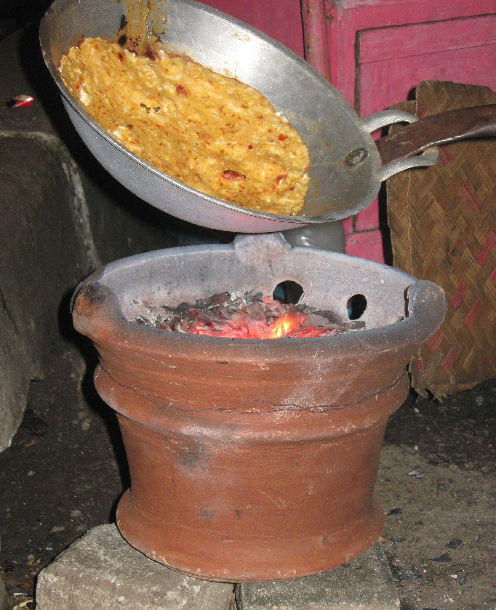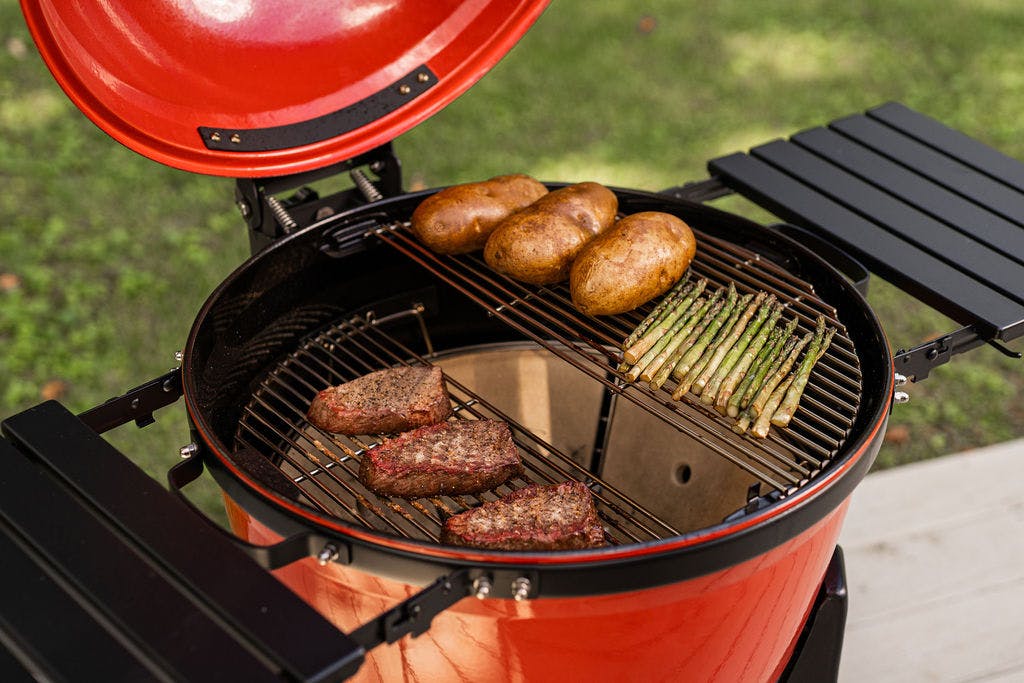The Kamado grill stands as a symbol of culinary evolution, its legacy spanning thousands of years. From ancient times to its widespread popularity today, the Kamado grill has grown into one of the most versatile and admired cooking tools in the world. Its history is a story of cultural exchange, technological progress, and a devoted global community. This article explores the rich heritage, transformation, and enduring appeal of Kamado grills.
The Ancient Roots of the Kamado Grill: Origins in Asia
The history of the Kamado grill stretches over 3,000 years to ancient Asia. The term "Kamado" comes from the Japanese word for "stove" or "cooking range," but the concept originated in China. There, the Yan steamer, an early version of the Kamado, was created, marking the beginning of a new era in cooking technology.
This early innovation spread to Japan, where it evolved into the mushikamado during the Kofun period (300–538 AD). These initial Kamado cookers, primarily used for rice steaming, were fueled by wood or charcoal, laying the foundation for the charcoal-based grilling that defines modern Kamado grills.
The Evolution of the Kamado in Japan
In Japan, the mushikamado design was further refined, introducing essential features like domed lids and airflow controls—key components that remain integral to today’s Kamado grills. By the early 20th century, Kamado grills had become popular across Japan, praised for their excellent heat retention and even cooking.
The original ceramic or clay Kamados offered superior heat absorption and radiation, allowing food to cook slowly and consistently. This unique construction helped preserve moisture and impart smoky flavors, setting the stage for the rich taste and texture that Kamado grilling is now known for.
The Kamado Grill Makes Its Way to the West
After World War II, the Kamado grill’s journey to the West began when American soldiers stationed in Japan brought them home as unique cooking tools. The grill quickly gained attention in the United States, where its popularity grew.
A milestone came in 1954 when Ed Fisher founded Big Green Egg, one of the first American companies to commercialize Kamado grills. Fisher improved the traditional design, using advanced ceramic materials to create a more durable and thermally efficient grill. Big Green Egg’s success led to the emergence of other brands, such as Kamado Joe, Primo Grills, and Vision Grills, expanding the Kamado grilling phenomenon to a global market.

Why Kamado Grills Are So Effective
Kamado grills are celebrated for their remarkable heat retention. Constructed from thick ceramic or clay, these grills maintain a stable cooking environment, conserving heat and making them ideal for both high-heat grilling and low-and-slow cooking.
Dual air vents—one at the bottom and another at the top—allow for precise temperature control. This design enables a wide cooking range, from around 200°F for smoking to over 700°F for searing.
The Kamado's egg-shaped design further enhances airflow, creating a convection effect that evenly circulates heat around the food. This airflow system supports various cooking methods, including grilling, smoking, roasting, and even baking, making Kamado grills some of the most adaptable cooking devices available.
Recent Innovations in Kamado Grill Design
While the core design of Kamado grills has remained largely unchanged over time, recent innovations have improved the grilling experience. Kamado Joe, for example, introduced the divide-and-conquer cooking system, allowing different foods to cook at varying temperatures simultaneously.
Other innovations include heat deflector plates for indirect cooking, rotisseries for larger cuts of meat, and smart temperature controllers for easy management. Today, Kamado grills come in various sizes, from portable models for grilling on the go to larger ones suited for family gatherings. Accessories such as pizza stones, griddles, and wok attachments expand their versatility even further.
Why Kamado Grills Are So Popular Today
Kamado grills have seen a significant resurgence, particularly among barbecue lovers and professional chefs. Here are the primary reasons behind their continued appeal:
Versatility
Kamado grills excel in multiple cooking techniques, including grilling, smoking, roasting, and baking. They offer excellent performance in both high-heat searing and slow cooking, making them ideal for home chefs seeking flexibility.
Durability
Modern Kamado grills are designed to withstand the elements. The ceramic construction of brands like Big Green Egg and Kamado Joe is weather-resistant, ensuring long-lasting value and year-round use.
Rich Flavor
The combination of charcoal and ceramic materials imparts a distinctive smoky flavor to the food, which is hard to replicate with gas or electric grills.
Heat Efficiency
Kamado grills are incredibly heat-efficient. They use less charcoal than traditional grills to achieve the same results, making them environmentally friendly and cost-effective over time.
Community
A vibrant and passionate community surrounds Kamado grilling. From online forums to cooking competitions, enthusiasts share tips, recipes, and techniques, fostering a dynamic culture centered around Kamado grills.

Conclusion: Kamado Grills – A Timeless Tool for Modern Cooking
The Kamado grill's journey from an ancient clay vessel to a modern culinary tool highlights its enduring appeal. With its exceptional heat retention, precise temperature control, and ability to impart rich, smoky flavors, the Kamado grill remains a beloved fixture in outdoor cooking. Whether you're a seasoned grill master or just starting, the Kamado grill offers a dependable and flavorful cooking experience that has stood the test of time.
